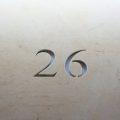Introduction to Elder Futhark Runes
The Elder Futhark runes represent the earliest form of the runic alphabets used by Germanic peoples, dating back to around the 2nd century CE. Comprising 24 distinct characters, this script was primarily employed for inscriptions on stone, wood, and metal across Northern Europe. The term Futhark itself is derived from the first six runes: Fehu, Uruz, Thurisaz, Ansuz, Raido, and Kaunan. These symbols were not merely a means of written communication; rather, they held significant cultural and mystical value. Their origins can be traced to the migration period, when Germanic tribes moved through continental Europe towards Scandinavia and eventually into Britain. The structure of the Elder Futhark reflects both phonetic utility and esoteric symbolism, with each rune believed to possess inherent magical properties. Understanding the Elder Futhark is essential for examining its adaptation and influence within Anglo-Saxon and British pagan traditions, as it provided a linguistic foundation and a set of symbolic tools that shaped spiritual practices throughout early medieval Britain.
2. Migration and Adaptation in the British Isles
The journey of Elder Futhark runes into the British Isles is best understood through a systematic exploration of migration and adaptation processes. As Germanic tribes, notably the Angles, Saxons, and Jutes, began migrating from continental Europe to Britain during the 5th and 6th centuries CE, they brought with them not only their language and social structures but also their spiritual practices, including the use of runic symbols. These migrations were driven by a combination of pressures such as climate change, population growth, and shifting political landscapes on the continent.
Upon arrival, these groups encountered existing Celtic cultures with their own rich traditions. The interaction between incoming Germanic settlers and indigenous Britons created fertile ground for cultural exchange. Runes initially served practical purposes—marking property, commemorating the dead, or inscribing items for trade—but gradually evolved to assume deeper ritualistic and symbolic roles within Anglo-Saxon paganism.
The Pathways of Transmission
The spread of Elder Futhark runes was facilitated by both migration and trade networks. Seafaring routes across the North Sea enabled not just physical movement but also the exchange of artefacts bearing runic inscriptions. Archaeological findings suggest that imported objects—such as weapons, jewellery, and tools—often featured runes, serving as templates for local adaptation.
| Migration Factor | Impact on Rune Dissemination |
|---|---|
| Tribal Movement | Brought original rune knowledge to new settlements in England |
| Trade Networks | Introduced runic-inscribed goods and exposed locals to runic script |
| Cultural Intermarriage | Facilitated blending of rune traditions with native symbolism |
| Religious Syncretism | Enabled integration of runes into emerging Anglo-Saxon pagan beliefs |
Adaptation to Local Contexts
The process of adaptation saw Elder Futhark runes modified to suit local dialects and spiritual needs. Over time, this led to the development of the Anglo-Saxon Futhorc—a unique variant with additional characters reflecting Old English sounds absent from the original system. The transformation was not merely linguistic; it mirrored broader changes in religious practice as British paganism absorbed elements from both Germanic newcomers and indigenous belief systems.
Cultural Implications for British Pagan Traditions
This systematic blend of migration, trade, and adaptation ensured that runes became a vital component of early medieval British identity. Their presence in archaeological sites across England—from Kent to Northumbria—demonstrates how deeply embedded these symbols became in everyday life as well as sacred practice. Understanding this process highlights the dynamic interplay between external influences and local innovation in shaping British pagan traditions.
![]()
3. Elder Futhark in Early Anglo-Saxon Culture
The integration of Elder Futhark runes into early Anglo-Saxon society marked a significant phase in the evolution of British spiritual and cultural identity. This ancient runic alphabet, originally developed by Germanic tribes, found its way to Britain during the migration period, influencing the linguistic landscape as well as ritual practices. Understanding the multifaceted role of Elder Futhark within this context requires a systematic examination of its use in language, religious rites, and material culture.
Linguistic Applications
Elder Futhark runes played a crucial part in the written communication of early Anglo-Saxon communities. While Latin eventually became dominant for ecclesiastical and administrative purposes, the runes were initially used to inscribe personal names, ownership marks, and short messages on objects such as brooches, weapons, and stones. The adaptability of Elder Futhark allowed it to represent Old English sounds with reasonable accuracy before the later transition to the Anglo-Saxon futhorc.
Ritual and Magical Use
Beyond their practical application in writing, Elder Futhark runes were imbued with mystical significance. Archaeological finds and comparative studies suggest that runes were often carved onto amulets, talismans, and grave goods as part of protective or divinatory rituals. The act of inscribing these symbols was believed to invoke supernatural powers or communicate with deities—a practice rooted in both Norse and developing British pagan traditions.
Material Culture and Social Identity
The presence of Elder Futhark inscriptions on artefacts from burial sites across England highlights their importance in expressions of identity and status. Items bearing runic marks often belonged to individuals of high social standing or those deeply embedded within religious structures. Such evidence points to a broader societal appreciation for the symbolic resonance of runes, bridging everyday life and spiritual belief systems within early Anglo-Saxon communities.
British Pagan Practices and Runic Symbolism
Within the context of British pagan traditions, Elder Futhark runes assumed a role that was both spiritual and deeply ritualistic. While their Norse origins are widely acknowledged, these symbols were adapted by local practitioners who sought to harness their perceived mystical powers within the British Isles. Runes became more than mere inscriptions; they were regarded as conduits for divine communication and protective charms, often integrated into rituals that reflected the unique character of native beliefs.
Spiritual Functions of Runes in British Paganism
For many early British pagans, runes were not only tools for writing but also instruments of spiritual significance. They were carved onto amulets, weapons, and sacred objects with the intention of invoking guidance from ancestral spirits or deities. In ritual contexts, certain runes were chosen for their symbolic resonance—such as Algiz for protection or Berkano for fertility—and recited during ceremonies to reinforce desired outcomes. This practice was particularly prevalent during seasonal festivals, where rune-casting or drawing would serve as a form of divination or blessing.
Examples from Local Folklore and Traditions
The adaptation of runic symbolism can be traced in various strands of British folklore. For instance, local tales from Yorkshire recount the use of runic inscriptions on door lintels to ward off malevolent spirits, while Cornish legends describe rune-marked stones placed near wells and crossroads as protective wards. Such customs reveal how runes were woven into the fabric of everyday life, bridging the mundane and the magical.
Common Ritual Uses of Elder Futhark Runes
| Rune | Symbolic Meaning | Traditional Use in Rituals | Regional Example |
|---|---|---|---|
| Algiz | Protection | Carved on homes or personal items for safety | Yorkshire doorway charms |
| Berkano | Fertility & Growth | Used in planting rituals or birth blessings | Celtic spring ceremonies |
| Ansuz | Divine Communication | Recited in incantations to seek wisdom from ancestors | Suffolk storytelling rites |
| Tiwaz | Courage & Justice | Marked on weapons for victory in battle or disputes | Merseyside warrior traditions |
| Eiwaz | Transformation & Endurance | Brought into funerary rites for safe passage to the afterlife | Cornish burial sites with rune stones |
The Enduring Legacy of Rune Magic in Britain
The integration of Elder Futhark runes into British pagan practices demonstrates a dynamic process of cultural exchange and localisation. Even after Christianisation, echoes of these traditions persisted within rural communities—manifesting as folk charms, superstitions, and seasonal customs. Today, modern pagans across Britain continue to draw upon this heritage, viewing runes as living symbols with ongoing spiritual relevance.
5. Transition to the Anglo-Saxon Futhorc
From Elder Futhark to Anglo-Saxon Futhorc: A Systematic Shift
The transformation from the Elder Futhark runic system to the Anglo-Saxon Futhorc was neither abrupt nor arbitrary. It was a process shaped by migration, linguistic evolution, and cultural adaptation within Britain. The original Elder Futhark, with its 24 characters, proved insufficient for the sounds found in Old English as spoken by incoming Germanic tribes such as the Angles, Saxons, and Jutes. This inadequacy necessitated expansion and modification of the runic alphabet.
Linguistic Drivers of Change
One primary cause of this transition was the phonetic complexity of Old English compared to the earlier Germanic tongues. New sounds required new symbols. As a result, additional runes were introduced, eventually expanding the script to up to 33 characters. This adaptation illustrates a pragmatic approach: rather than abandoning tradition, British pagans and scribes evolved it to suit their needs.
Cultural Implications within Britain
This expansion also reflected broader cultural dynamics. The integration of runes into daily life and spiritual practice—engraved on amulets, memorial stones, and artefacts—demonstrates their enduring significance. The modified Futhorc facilitated not only communication but also the transmission of mythological knowledge, legal codes, and charms specific to the British context. Thus, the transition from Elder Futhark to Futhorc symbolises both continuity and innovation: an imported tradition reimagined in response to local conditions.
Conclusion: An Evolving Tradition
The logical progression from Elder Futhark to Anglo-Saxon Futhorc underscores how language and culture interact dynamically. In Britain, runes did not remain static relics but became living symbols tailored to new social realities—a testament to the adaptive spirit of early British paganism.
6. Legacy and Modern British Interpretation
The enduring influence of Elder Futhark runes within the context of British paganism is both a testament to their historical resonance and a reflection of contemporary cultural revivalism. While the original use of these runes faded with the ascendancy of Christianity, their legacy has been rediscovered and reinterpreted by modern practitioners across the United Kingdom.
Revival in Contemporary Paganism
Over recent decades, there has been a marked resurgence in interest toward pre-Christian spiritualities in Britain, with Elder Futhark runes occupying a significant place within this movement. Neo-pagan groups such as Heathens, Asatruar, and eclectic practitioners often integrate runic symbols into rituals, divination practices, and personal talismans. This revival is not merely antiquarian but rooted in an ongoing search for spiritual identity, ancestral connection, and alternative cosmologies that resonate with British landscapes and histories.
Runes as Tools for Meaning-Making
In modern British contexts, Elder Futhark runes are frequently used for divination—casting rune stones or drawing runic cards to seek guidance. Beyond fortune-telling, many see them as archetypal symbols that encapsulate universal themes such as transformation, protection, or challenge. Workshops and study groups throughout the UK focus on exploring these meanings, often adapting interpretations to fit contemporary issues while respecting historical sources.
Cultural Integration and Popularity
The reach of Elder Futhark runes extends beyond strictly pagan circles. Runes appear in British popular culture—tattoos, jewellery, literature, and even local festivals—serving as markers of heritage or expressions of alternative spirituality. Museums across England and Scotland increasingly feature rune-related artefacts in exhibitions, reflecting both scholarly interest and public fascination.
Challenges in Authenticity and Interpretation
This revival is not without its complexities. Questions regarding the authenticity of reconstructed rituals or the accuracy of modern interpretations are frequently debated among practitioners and academics alike. There is a conscious effort within British pagan communities to balance creative adaptation with rigorous research, acknowledging both the limits of historical knowledge and the need for meaningful contemporary practice.
A Living Tradition
Ultimately, the legacy of Elder Futhark runes in Britain today illustrates how ancient symbols can be continually reimagined to suit changing cultural landscapes. Their presence in modern British paganism underscores a collective desire to reconnect with deeper mythological roots, foster community identity, and engage thoughtfully with traditions that shape both personal belief systems and broader cultural narratives.


